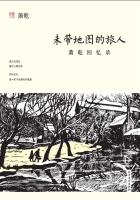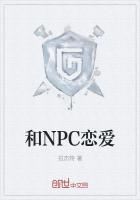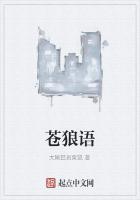A five-mile trench was dug beside a railway track. The work was done handily and cheaply by the labor-saving plan of hitching a locomotive to a plough. Five ploughs were jerked apart before the work was finished. Then, into this trench were laid wires with every known sort of covering. Most of them, naturally, were wrapped with rubber or gutta-percha, after the fashion of a submarine cable. When all were in place, the willing locomotive was harnessed to a huge wooden drag, which threw the ploughed soil back into the trench and covered the wires a foot deep. It was the most professional cable-laying that any one at that time could do, and it succeeded, not brilliantly, but well enough to encourage the telephone engineers to go ahead.
Several weeks later, the first two cables for actual use were laid in Boston and Brooklyn;and in 1883 Engineer J. P. Davis was set to grapple with the Herculean labor of putting a complete underground system in the wire-bound city of New York. This he did in spite of a bombardment of explosions from leaky gas-pipes, and with a woeful lack of experts and standard materials. All manner of makeshifts had to be tried in place of tile ducts, which were not known in 1883. Iron pipe was used at first, then asphalt, concrete, boxes of sand and creosoted wood. As for the wires, they were first wrapped in cotton, and then twisted into cables, usually of a hundred wires each. And to prevent the least taint of moisture, which means sudden death to a telephone current, these cables were invariably soaked in oil.
This oil-filled type of cable carried the telephone business safely through half a dozen years.
But it was not the final type. It was preliminary only, the best that could be made at that time. Not one is in use to-day. In 1888 Theodore Vail set on foot a second series of experiments, to see if a cable could be made that was better suited as a highway for the delicate electric currents of the telephone. A young engineer named John A. Barrett, who had already made his mark as an expert, by finding a way to twist and transpose the wires, was set apart to tackle this problem. Being an economical Vermonter, Barrett went to work in a little wooden shed in the backyard of a Brooklyn foundry. In this foundry he had seen a unique machine that could be made to mould hot lead around a rope of twisted wires. This was a notable discovery.
It meant TIGHT COVERINGS. It meant a victory over that most troublesome of enemies--moisture.
Also, it meant that cables could henceforth be made longer, with fewer sleeves and splices, and without the oil, which had always been an unmitigated nuisance.
Next, having made the cable tight, Barrett set out to produce it more cheaply and by accident stumbled upon a way to make it immensely more efficient. All wires were at that time wrapped with cotton, and his plan was to find some less costly material that would serve the same purpose. One of his workmen, a Virginian, suggested the use of paper twine, which had been used in the South during the Civil War, when cotton was scarce and expensive.
Barrett at once searched the South for paper twine and found it. He bought a barrel of it from a small factory in Richmond, but after a trial it proved to be too flimsy. If such paper could be put on flat, he reasoned, it would be stronger. Just then he heard of an erratic genius who had an invention for winding paper tape on wire for the use of milliners.
Paper-wound bonnet-wire! Who could imagine any connection between this and the telephone?
Yet this hint was exactly what Barrett needed. He experimented until he had devised a machine that crumpled the paper around the wire, instead of winding it tightly. This was the finishing touch. For a time these paper-wound cables were soaked in oil, but in 1890 Engineer F. A. Pickernell dared to trust to the tightness of the lead sheathing, and laid a "dry core"cable, the first of the modern type, in one of the streets of Philadelphia. This cable was the event of the year. It was not only cheaper. It was the best-talking cable that had ever been harnessed to a telephone.
What Barrett had done was soon made clear.
By wrapping the wire with loose paper, he had in reality cushioned it with AIR, which is the best possible insulator. Not the paper, but the air in the paper, had improved the cable. More air was added by the omission of the oil. And presently Barrett perceived that he had merely reproduced in a cable, as far as possible, the conditions of the overhead wires, which are separated by nothing but air.
By 1896 there were two hundred thousand miles of wire snugly wrapped in paper and lying in leaden caskets beneath the streets of the cities, and to-day there are six million miles of it owned by the affiliated Bell companies. Instead of blackening the streets, the wire nerves of the telephone are now out of sight under the roadway, and twining into the basements of buildings like a new sort of metallic ivy. Some cables are so large that a single spool of cable will weigh twenty-six tons and require a giant truck and a sixteen-horse team to haul it to its resting-place.
As many as twelve hundred wires are often bunched into one sheath, and each cable lies loosely in a little duct of its own. It is reached by manholes where it runs under the streets and in little switching-boxes placed at intervals it is frayed out into separate pairs of wires that blossom at length into telephones.
Out in the open country there are still the open wires, which in point of talking are the best. In the suburbs of cities there are neat green posts with a single gray cable hung from a heavy wire. Usually, a telephone pole is made from a sixty-year-old tree, a cedar, chestnut, or juniper. It lasts twelve years only, so that the one item of poles is still costing the telephone companies several millions a year. The total number of poles now in the United States, used by telephone and telegraph companies, once covered an area, before they were cut down, as large as the State of Rhode Island.















